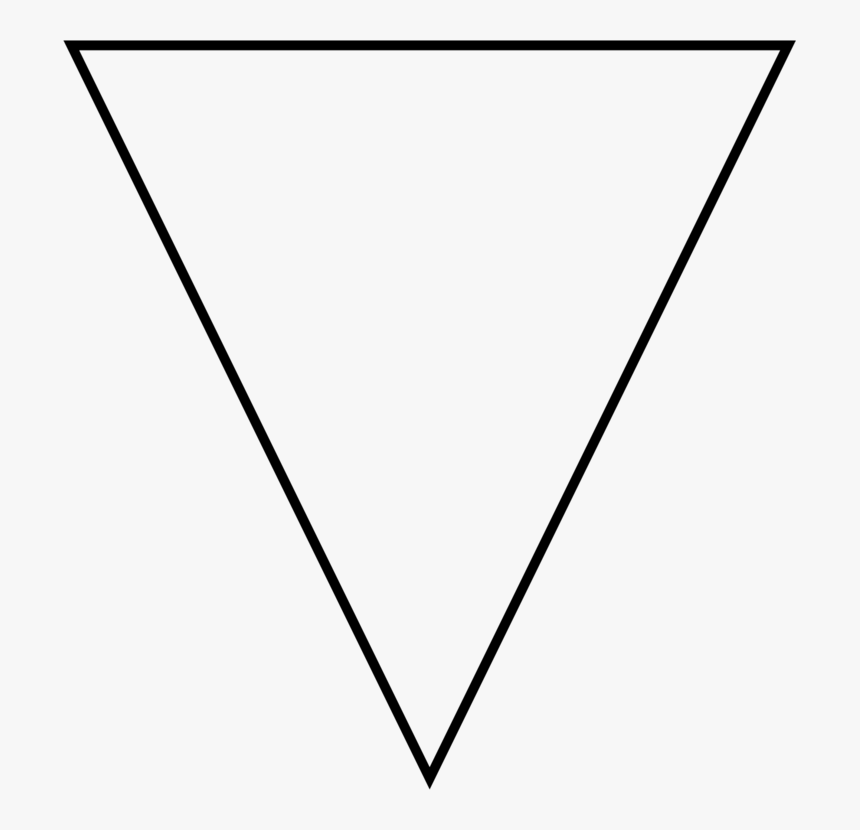Triangles, both right-side up and upside down, hold immense significance across various fields. Whether you're an artist, mathematician, or designer, understanding these shapes is crucial. They aren't just basic geometry; they're symbols of balance, strength, and transformation. So, buckle up as we embark on a journey to unravel the mysteries behind the triangle and its inverted counterpart.
You might be wondering why we're diving into triangles today. Well, these shapes are everywhere – in architecture, art, and even in the way we perceive the world. They're not just random polygons; they're powerful symbols that influence our daily lives in ways we might not even realize.
Before we dive deep into the specifics, let's set the stage. This article will explore everything you need to know about triangles and upside-down triangles. We'll cover their meanings, applications, and how they impact different industries. By the end, you'll have a newfound appreciation for these humble shapes.
Read also:Belpre Landing Photos Capturing The Essence Of Belpres Scenic Beauty
Table of Contents
- What is a Triangle?
- Types of Triangles
- The Meaning of an Upside Down Triangle
- Triangles in Mathematics
- Triangles in Art and Design
- Triangles in Architecture
- Symbolism of Triangles
- Triangles in Psychology
- Triangles in Technology
- Conclusion
What is a Triangle?
Alright, let's start with the basics. A triangle is a polygon with three sides and three angles. It’s one of the simplest shapes in geometry, yet it’s packed with complexity. Think about it – triangles are everywhere. From the pyramids of Egypt to the roof of your house, triangles play a crucial role in structural stability.
But what makes a triangle so special? For starters, it’s the only polygon that can’t be deformed without changing the length of its sides. This makes it incredibly strong and reliable. Whether it’s a right triangle, an equilateral triangle, or an isosceles triangle, each type has its own unique properties and uses.
Key Characteristics of Triangles
- Three sides
- Three angles
- Sum of angles equals 180 degrees
- Can be classified based on angles or sides
Triangles are like the building blocks of geometry. They’re simple yet versatile, making them indispensable in various fields. But what happens when you flip one upside down? That’s where things get interesting.
Types of Triangles
Triangles come in all shapes and sizes. You’ve got your equilateral triangles, where all sides are equal, and your scalene triangles, where no sides are equal. Then there’s the isosceles triangle, which has two equal sides. But that’s not all. Triangles can also be classified based on their angles.
Classifications Based on Angles
- Acute Triangle: All angles are less than 90 degrees.
- Right Triangle: One angle is exactly 90 degrees.
- Obtuse Triangle: One angle is greater than 90 degrees.
Understanding these classifications is key to unlocking the full potential of triangles. Whether you’re solving a math problem or designing a structure, knowing the type of triangle you’re dealing with can make all the difference.
The Meaning of an Upside Down Triangle
Now, let’s talk about the upside-down triangle. When you flip a triangle, it takes on a whole new meaning. In many cultures, an upside-down triangle symbolizes femininity, water, and intuition. It’s often associated with the element of water and is used in various spiritual practices.
Read also:Coven Makeup Unveiling The Spellbinding World Of Witchy Beauty Trends
But the symbolism doesn’t stop there. In mathematics, an upside-down triangle is sometimes used to represent a gradient or a change in direction. In art, it can signify movement or instability. The meaning of an upside-down triangle depends on the context in which it’s used.
Symbolic Interpretations
- Femininity
- Water
- Intuition
- Change
- Movement
So, the next time you see an upside-down triangle, take a moment to think about its meaning. It might just hold a deeper significance than you realize.
Triangles in Mathematics
Triangles are the bread and butter of mathematics. They’re used in everything from basic geometry to advanced calculus. One of the most famous applications of triangles is the Pythagorean theorem, which states that in a right triangle, the square of the hypotenuse is equal to the sum of the squares of the other two sides.
But triangles aren’t just limited to the Pythagorean theorem. They’re also used in trigonometry, where they help us understand angles and distances. Whether you’re calculating the height of a building or determining the distance between two points, triangles are your go-to tool.
Applications in Mathematics
- Pythagorean theorem
- Trigonometry
- Geometry
- Calculus
Mathematics wouldn’t be the same without triangles. They’re the foundation of many mathematical concepts and continue to be a vital part of the field.
Triangles in Art and Design
Artists and designers love triangles. They’re used to create balance, movement, and depth in visual compositions. Whether you’re painting a landscape or designing a logo, triangles can add a dynamic element to your work.
But triangles aren’t just about aesthetics. They also have practical applications in design. For example, triangular shapes are often used in architecture to create strong, stable structures. In fashion, triangles can be used to create visual interest and draw attention to specific areas.
Uses in Art and Design
- Balance
- Movement
- Depth
- Stability
- Visual interest
Triangles are a versatile tool for artists and designers. They can be used to create everything from simple shapes to complex compositions.
Triangles in Architecture
When it comes to architecture, triangles are king. Their strength and stability make them ideal for building structures that need to withstand the test of time. From the pyramids of Egypt to the modern skyscrapers of today, triangles are a crucial component of architectural design.
But triangles aren’t just limited to structural support. They’re also used for aesthetic purposes. Triangular shapes can add visual interest to a building and create a sense of movement and dynamism.
Architectural Applications
- Structural support
- Aesthetic design
- Roof structures
- Trusses
- Bracing systems
Triangles are the backbone of architecture. Without them, many of the world’s most iconic structures wouldn’t exist.
Symbolism of Triangles
Triangles have been used as symbols for centuries. In many cultures, they represent different concepts and ideas. For example, in Christianity, the triangle is often used to symbolize the Holy Trinity. In alchemy, it represents the three elements – earth, air, and water.
But triangles aren’t just limited to religious and spiritual symbolism. They’re also used in modern branding and marketing. Companies often use triangular shapes in their logos to convey strength, stability, and innovation.
Symbolic Representations
- Holy Trinity
- Three elements
- Strength
- Stability
- Innovation
Triangles are powerful symbols that can convey a wide range of meanings. Their versatility makes them a popular choice for artists, designers, and marketers alike.
Triangles in Psychology
Psychologists have long been fascinated by triangles. They’re often used in psychological tests to assess cognitive abilities and spatial reasoning. For example, the Kohs Block Design Test uses triangular blocks to evaluate a person’s ability to perceive and manipulate shapes.
Triangles are also used in Gestalt psychology, which focuses on how we perceive and organize visual information. According to Gestalt principles, triangles are one of the simplest and most recognizable shapes, making them ideal for studying perception.
Psychological Applications
- Cognitive testing
- Spatial reasoning
- Gestalt psychology
- Perception studies
Triangles play a crucial role in psychology. They help us understand how the human mind processes and interprets visual information.
Triangles in Technology
In the world of technology, triangles are everywhere. They’re used in computer graphics to create 3D models and animations. Whether you’re designing a video game or creating a virtual reality experience, triangles are the building blocks of digital worlds.
Triangles are also used in machine learning and artificial intelligence. They’re often used to represent data points and relationships between variables. In fact, many algorithms rely on triangular shapes to perform complex calculations and predictions.
Technological Uses
- Computer graphics
- 3D modeling
- Machine learning
- Artificial intelligence
Triangles are the foundation of many technological advancements. Without them, the digital world as we know it wouldn’t exist.
Conclusion
And there you have it – a comprehensive look at triangles and upside-down triangles. From their mathematical properties to their symbolic meanings, triangles are a fascinating subject. Whether you’re an artist, mathematician, or architect, understanding triangles can enhance your work and broaden your perspective.
So, the next time you see a triangle, take a moment to appreciate its complexity and versatility. And if you’re feeling adventurous, try flipping it upside down and see what new meanings you can discover. Remember, triangles are more than just shapes – they’re symbols of strength, balance, and transformation.
Thanks for joining me on this journey. If you enjoyed this article, don’t forget to leave a comment and share it with your friends. Who knows? You might just inspire someone to see triangles in a whole new light.


